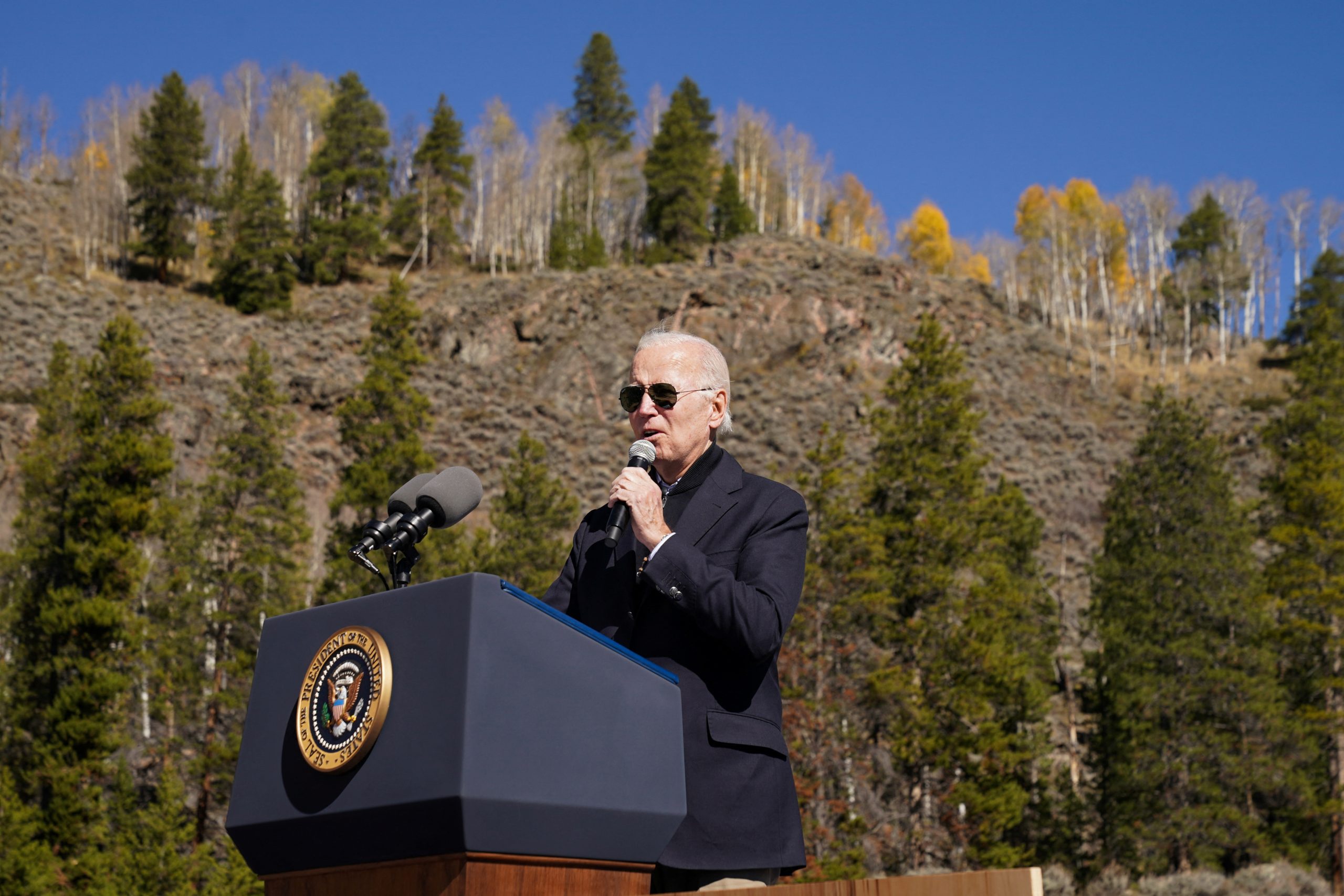
Lauren C. Moye, FISM News
[elfsight_social_share_buttons id=”1″]
President Joe Biden believes that voter turnout will rival the 2020 elections, even as the latest Rasmussen polls indicate that the GOP might recover the majority vote in both houses.
Biden’s interview with MSNBC’s Jonathan Capehart aired on Friday in an opportunity that Biden used to condemn the “mega MAGA Republicans” and former President Donald Trump for threatening democracy and a general pursuit of power at any cost.
For this reason, Biden believes that the U.S. is at an “inflection point,” but also believes that “fairness, decency, honesty” are fundamental traits “baked in” to most Americans.
He added, “I believe, though, that in 2020, for example, more people showed up to vote than any time in American history. I think they’re going to do it again.”
When Capeheart added that the latest polls show more Americans trust the GOP with the economy, a top voter issue for the midterms, more than they do Democrats into the conversation, Biden seemed to indicate that Democratic measures that had been passed with only slim majorities would be enough motivation for Blue voters to “show up like they did last time.”
Historically, voter turnout is traditionally lower in midterm elections than it is in presidential elections. For example, the 2018 midterms set a 100-year high for a non-presidential election with 49.3% of eligible voters turning in ballots. In 2020, which also had the highest turnout of any U.S. election in 120 years, the turnout was roughly two-thirds of the eligible population.
Polling on voter enthusiasm resembles that ahead of the 2018 congressional elections, indicating that voter turnout might be high. In 2018, 30% of voters at this point in the election cycle said they were extremely enthusiastic about voting in a CNN poll. This week, 28% said they were extremely enthusiastic in the same poll.
CNN notes there is a strong correlation between voter enthusiasm and turnout. In 2014 at this point, only 15% of voters were extremely enthusiastic about voting. That year went on record as a 70-year low for the number of ballots cast.
So while Biden is likely right to expect a high voter turnout, he should be cautioned that this might not be in the Democrats’ favor.
First, it’s true that Americans largely trust Republicans with the economy. It’s also true that the GOP has a greater voter trust with other key top issues like inflation and crime.
Meanwhile, Americans have given Biden a dismal report on his handling of all issues. His approval rating for how he has handled the economy, employment and jobs, and immigration are all in the 30s.
Second, this week’s Rasmussen Report shows that Republicans have a four-point lead over Democrats with only 18 days to go until the election. Rasmussen Reports found that 47% of likely voters would vote for the Republican candidate compared to 43% who would vote for the Democrat in a generic poll if the election was held today.
While this is a slight decline from the GOP’s 48% to 41% lead last week, it still hints at an election that will end in Republicans’ favor.
“What we have known on the generic ballot, and this has held year after year after year, if it’s a generic balance within 3 points, it usually means we’re winning enough districts that we take control of Congress,” said GOP pollster Ed Goeas.
Significantly, Republicans currently have an 11-point advantage over Democrats among independent voters.
Even more notable is the advantage that Republicans enjoy in six battleground states according to Rasmussen data collected from July 28 to Oct. 10.
In Arizona, the GOP leads by a three-point margin, 47%-44% on the generic ballot question.
In Georgia, this is an 11-point lead, 50%-39%.
Michigan and Wisconsin voters favor Republicans by four points, 48%-44% and 46% to 42% respectively.
This gap grows again when considering Ohio, where it’s 47%-41% in Republicans’ favor.
Finally, Pennsylvania sees Republicans leading by a five-point margin, 48% to 43%.
It’s enough to switch some Senate races that were previously considered ‘leaning Democrat’ back into the toss-up category. Even CNN has noticed that Democrat candidates’ leads have tightened in recent weeks, such as in Pennsylvania and Arizona.
